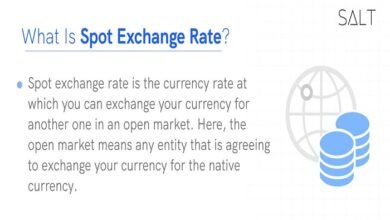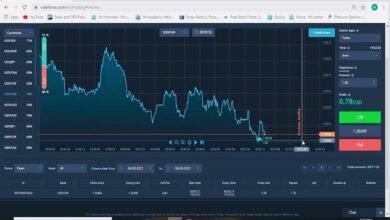
Introduction
Exchange traded investments have revolutionized the way individuals participate in the financial markets. Whether you’re a seasoned investor or a beginner, understanding exchange traded products (ETPs) such as ETFs (Exchange Traded Funds) and ETNs (Exchange Traded Notes) is essential for maximizing your investment potential. This comprehensive guide will explore various types of exchange traded investments, their benefits, risks, and strategies to help you make informed decisions.
Investing in exchange traded products can provide diversification, liquidity, and cost efficiency. These features make exchange traded investments an attractive option for building a well-rounded portfolio. By delving into the intricacies of exchange traded products, you can better navigate the financial markets and achieve your investment goals.
Types of Exchange Traded Products
Exchange traded products encompass a broad range of investment vehicles, including ETFs, ETNs, and closed-end funds. Each type of exchange traded investment offers unique characteristics and benefits. ETFs are the most common form of exchange traded products, tracking indexes, sectors, commodities, or other assets. They provide investors with exposure to a diversified basket of securities, similar to mutual funds, but trade on exchanges like stocks.
ETNs are unsecured debt instruments issued by banks, designed to track the performance of a specific index or asset. Unlike ETFs, ETNs do not hold underlying assets but rely on the creditworthiness of the issuer. Closed-end funds are another type of exchange traded investment, issuing a fixed number of shares that trade on exchanges. Understanding the differences between these products is crucial for selecting the right exchange traded investment for your portfolio.
Benefits of Investing in Exchange Traded Products
One of the primary benefits of investing in exchange traded products is diversification. By investing in an ETF, for example, you gain exposure to a broad range of assets, reducing the risk associated with individual securities. This diversification helps smooth out returns and minimizes the impact of poor performance from any single investment.
Another significant benefit of exchange traded investments is liquidity. ETFs and ETNs trade on major exchanges, allowing investors to buy and sell shares throughout the trading day at market prices. This liquidity provides flexibility and ease of access, enabling investors to respond quickly to market conditions. Additionally, exchange traded products often have lower expense ratios compared to mutual funds, making them a cost-effective option for long-term investing.
Risks Associated with Exchange Traded Products
While exchange traded products offer numerous benefits, they also come with certain risks. One of the primary risks is market risk, as the value of ETFs and ETNs can fluctuate based on the performance of the underlying assets. For example, an ETF tracking the S&P 500 will rise and fall with the index’s movements, exposing investors to market volatility.
Another risk associated with exchange traded products is tracking error, which occurs when the performance of an ETF or ETN deviates from the underlying index or asset it is designed to track. This discrepancy can be due to management fees, trading costs, or other factors. Additionally, ETNs carry credit risk, as they are debt instruments subject to the issuer’s solvency. Understanding these risks is crucial for making informed decisions when investing in exchange traded products.
How to Choose the Right Exchange Traded Product
Selecting the right exchange traded product involves considering various factors, such as investment objectives, risk tolerance, and market conditions. First, determine your investment goals and how exchange traded products can help you achieve them. For example, if you seek broad market exposure, an ETF tracking a major index like the S&P 500 might be suitable.
Next, evaluate the expense ratios and fees associated with different exchange traded products. Lower costs can significantly impact long-term returns, so choosing cost-effective options is essential. Additionally, consider the liquidity of the ETF or ETN, ensuring there is sufficient trading volume to facilitate easy buying and selling. By carefully analyzing these factors, you can select the exchange traded products that best align with your investment strategy.
Building a Diversified Portfolio with Exchange Traded Products
Building a diversified portfolio with exchange traded products involves spreading your investments across various asset classes, sectors, and geographic regions. ETFs offer a convenient way to achieve diversification, as they can provide exposure to equities, bonds, commodities, and alternative investments. For example, you might combine an ETF that tracks a broad stock market index with another that focuses on international equities and a third that invests in bonds.
Sector-specific ETFs allow you to target particular industries, such as technology, healthcare, or energy, enhancing your portfolio’s diversification. Geographic diversification can be achieved by investing in ETFs that track international markets or emerging economies. By constructing a well-diversified portfolio with exchange traded products, you can reduce risk and improve the potential for long-term returns.
Strategies for Investing in Exchange Traded Products
Successful investing in exchange traded products requires employing effective strategies tailored to your financial goals and risk tolerance. One popular strategy is dollar-cost averaging, which involves regularly investing a fixed amount of money into an ETF or ETN regardless of market conditions. This approach helps mitigate the impact of market volatility and reduces the risk of making poorly timed investments.
Another strategy is tactical asset allocation, where you adjust your portfolio’s asset mix based on market conditions and economic forecasts. For example, during periods of economic growth, you might increase your exposure to equities through ETFs, while in times of uncertainty, you could shift towards bonds or defensive sectors. Employing a disciplined, long-term investment strategy can help you maximize the benefits of exchange traded products.
Tax Considerations for Exchange Traded Products
Understanding the tax implications of investing in exchange traded products is essential for optimizing your returns. ETFs generally offer tax efficiency due to their structure and in-kind creation and redemption process. This process minimizes capital gains distributions, allowing investors to defer taxes until they sell their shares.
However, not all exchange traded products are equally tax-efficient. ETNs, for example, may generate taxable income and gains that can affect your tax liability. Additionally, certain types of ETFs, such as those that invest in commodities or real estate, may have unique tax considerations. Consulting with a tax professional or financial advisor can help you navigate the tax implications of your exchange traded investments and develop a tax-efficient investment strategy.
Monitoring and Rebalancing Your Exchange Traded Portfolio
Regularly monitoring and rebalancing your exchange traded portfolio is crucial for maintaining your desired asset allocation and managing risk. Market fluctuations can cause your portfolio’s asset mix to drift from your target allocation, potentially increasing risk or reducing returns. Rebalancing involves adjusting your holdings by buying or selling exchange traded products to realign your portfolio with your investment strategy.
Establishing a regular rebalancing schedule, such as quarterly or annually, can help you stay disciplined and maintain a balanced portfolio. Additionally, keeping track of market trends, economic indicators, and the performance of your exchange traded products allows you to make informed decisions and adjust your strategy as needed. Consistent monitoring and rebalancing ensure that your portfolio remains aligned with your financial goals.
The Future of Exchange Traded Products
The future of exchange traded products looks promising, with continued growth and innovation expected in the industry. The increasing popularity of ETFs and ETNs has driven the development of new products, offering investors more options to achieve their investment objectives. Advances in technology, such as artificial intelligence and machine learning, are also enhancing the way exchange traded products are managed and traded.
Additionally, the growing focus on environmental, social, and governance (ESG) investing is shaping the future of exchange traded products. ESG ETFs, which invest in companies with strong sustainability and ethical practices, are gaining traction among investors seeking to align their portfolios with their values. As the financial markets evolve, exchange traded products will continue to play a vital role in helping investors build diversified, cost-effective, and flexible portfolios.
Conclusion
Exchange traded products, including ETFs, ETNs, and closed-end funds, offer a versatile and efficient way to invest in the financial markets. By understanding the benefits, risks, and strategies associated with exchange traded investments, you can make informed decisions that align with your financial goals. Whether you’re looking to diversify your portfolio, reduce costs, or gain exposure to specific sectors or regions, exchange traded products provide a valuable tool for achieving your investment objectives.
As the landscape of exchange traded products continues to evolve, staying informed and adaptable will be key to maximizing your investment potential. By embracing the opportunities presented by exchange traded products, you can build a resilient and dynamic portfolio that supports your long-term financial success.
FAQs
1. What are exchange traded products? Exchange traded products (ETPs) include ETFs, ETNs, and closed-end funds. They are investment vehicles that trade on exchanges, offering exposure to various assets and indexes.
2. How do ETFs differ from ETNs? ETFs are funds that hold a diversified portfolio of assets, while ETNs are debt instruments issued by banks that track an index or asset. ETFs have underlying assets, whereas ETNs rely on the issuer’s creditworthiness.
3. What are the benefits of investing in exchange traded products? Benefits include diversification, liquidity, cost efficiency, and flexibility. ETPs allow investors to gain broad market exposure and trade shares throughout the day at market prices.
4. What risks are associated with exchange traded products? Risks include market risk, tracking error, and credit risk (for ETNs). ETP values can fluctuate based on the performance of underlying assets and market conditions.
5. How can I build a diversified portfolio with exchange traded products? Diversify by investing in ETFs across different asset classes, sectors, and regions. Combine various ETFs to achieve broad exposure and reduce risk, aligning your portfolio with your investment goals.





